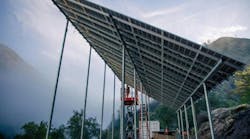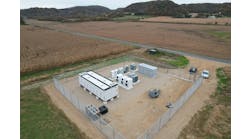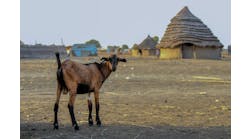Modern, environmentally friendly energy is available to villagers in the Indian Sundarbans — the world’s largest, remaining mangrove forest ecosystem — thanks to village microgrids deployed as a result of WWF-India’s Project Sahasra Jyoti.
Home to 4.5 million people, the region depends on kerosene, candles and forest biomass for cooking and lighting. That results in deforestation, which degrades and fragments the forests, and causes indoor and outdoor pollution. Lack of lighting also raises the potential for conflict between villagers and wildlife.
For more than 500 Sundarbans’ village households, along with local businesses and institutions, these pressures are alleviated for the first time with reliable, safe electricity and energy-efficient LED household and street lighting as a result of Project Sahasra Jyoti, which WWF-India carried out in partnership with Schneider Electric India Foundation, Bank of America and local communities.
Avoiding conflict between humans and wildlife
Living in small, remote and isolated communities, Sundarbans’ villagers combine their rudimentary energy sources with DC batteries. Recharging batteries for home use is quite a task for villagers, said Anurag Kapoor, general manager, CSR, Schneider Electric, India.
Doing so typically entails hiking and traveling by boat to reach the nearest power grid access point, rail or road head. Schneider Electric and WWF-India faced similar logistical challenges when building the village microgrids, Kapoor said in an interview. “Transporting all the equipment and components required [to construct the village microgrid] was probably our biggest challenge.”
Working with residents, local communities, the project partners connected 69 village households and 25 shops to an initial, solar PV-energy storage, DC microgrid during the project’s first phase, which began in January 2016. Five microgrids were up and running on the Sundarbans’ Satjelia Island as of March, serving a total of 487 households and 25 shops.
Five microgrids were up and running on the Sundarbans’ Satjelia Island as of March
In addition to households, the microgrids power some schools, disaster relief shelters and other community services facilities. They also power LED street lights. That goes a long way towards helping avoid conflicts between villagers and wildlife, including the Royal Bengal tiger, a rare and endangered species indigenous to Sundarbans’ forests.
Sustainable energy, socioeconomic development and resource conservation
“The potential for conflict is a constant between wildlife and human life in areas such as the Sundarbans,” Venkat Garimella, Schneider Electric, India vice president for Access to Energy and CSR, told Microgrid Knowledge.
Street lighting helps warn off dangerous wildlife. The microgrids also enable villagers to erect lightweight, portable electric fencing with voltages sufficient to deter, but not cause any lasting or serious harm, to predators. The electricity can also be used to power motion sensors and alarm systems that make use of sound, light or both.
“Access to energy, to electricity, is the backbone of any socioeconomic development program,” Garimella said. “We have been active in India for about 30 years now, carrying out projects that span the entire spectrum of energy technology and systems management from end-to-end. We’re very familiar with microgrids, so it was natural for us to serve as the power systems technology provider for this project.”
WWF-India has been working closely with rural communities across India to identify and implement solutions that work for them while at the same time conserving ecosystems and wildlife, Kapoor said.
That includes making use of local, sustainable energy resources. “WWF-India’s renewable energy initiative addresses a wide gamut of conservation issues facing the planet today and has a direct connection between human well-being and environment protection,” Kapoor said. “WWF-India also expanded the partnership to include Bank of America to provide financial support to the project.”
What it takes to build village microgrids
Talking about the critical aspects of Project Sahasra Jyoti, Kapoor pointed out, “Carrying out a project of this nature requires a lot in the way of ground support and constructive engagement with the community.”
Community engagement included carrying out site surveys and assessments, as well as establishing Village Electrification Committees to represent villagers’ interests. Spearheading the project at the grass roots level, WWF-India helped the Village Energy Committees create secure community project funds and associated bank accounts.
Connected villagers pay security deposits and monthly service charges into the funds. The community bank accounts are managed by the Village Electrification Committees.
Project team members also educated and trained villagers to operate and maintain the village microgrids.
In sum, WWF-India helped build community relations and mobilize residents that were keys to successful implementation of the project. That left partners, such as Schneider Electric India Foundation to focus on the design, technical aspects and implementation of the village microgrids, Kapoor said. The partners also launched the Project Sahasra Jyoti Entrepreneurial Program to train villagers for careers in the fields of solar and sustainable energy technology and systems.
All images courtesy of Schneider Electric India Foundation, WWF-India Project Sahasra Jyoti
Track news about worldwide development of village microgrids. Subscribe to the free Microgrid Knowledge newsletter.






